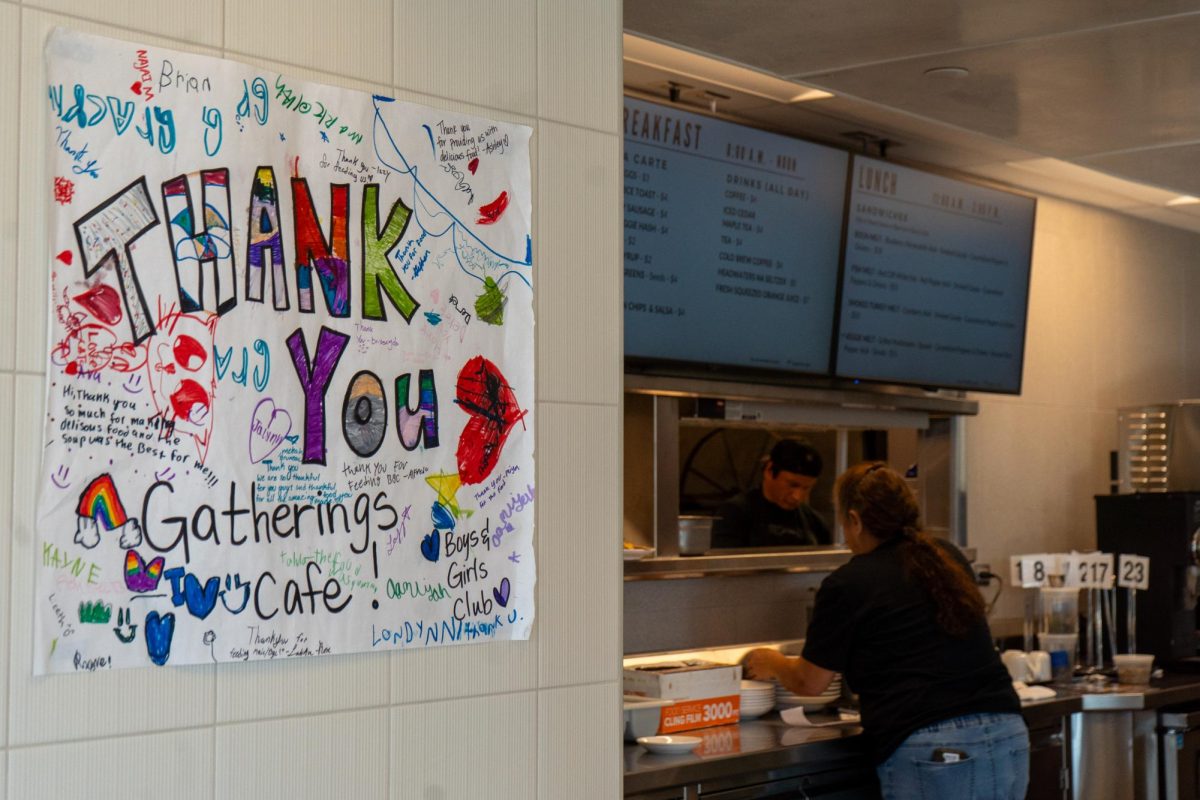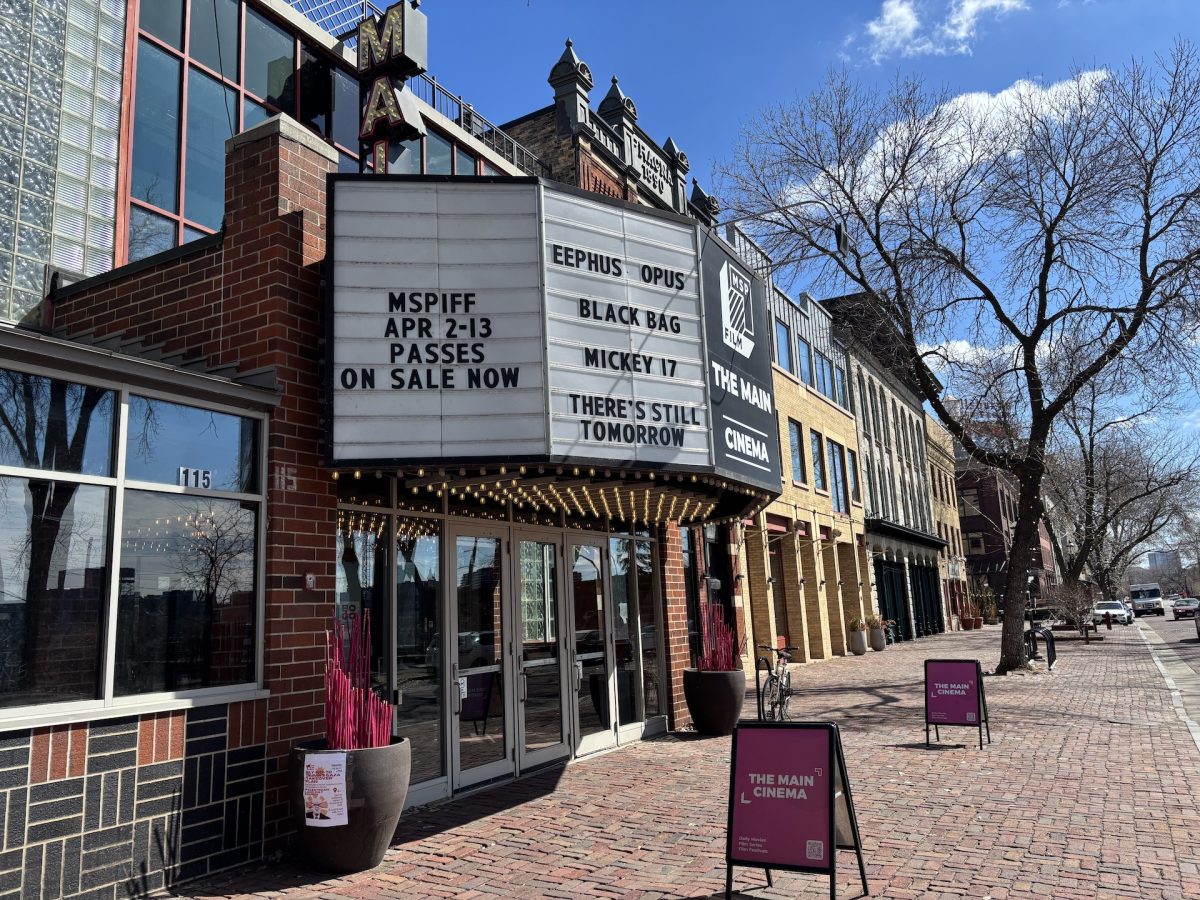You’d be hard-pressed to find a bison melt, bison tacos or lemon saguaro seed muffins anywhere else in the Twin Cities outside of Gatherings Café.
Housed in the Minnesota American Indian Center (MAIC) on Franklin Avenue, the heart of the American Indian Cultural Corridor, Gatherings “strives to provide accessible, healthy Indigenous food and knowledge to the Twin Cities Native and greater community,” according to its website.
The café re-opened in June after a year and a half of renovations, which yielded a bright, airy dining room, a revamped menu and a new executive chef to oversee it all.
“It looks like a completely different space,” said Natalie Rademacher, MAIC communications coordinator.
According to Rademacher, who is of Grand Portage Ojibwe descent, Gatherings first opened a decade ago as an informal concession kitchen instead of a fully-fledged restaurant.
“We have so much more capacity than we used to,” Rademacher said. “It’s really fun just being able to expand what we do, reach more people and share Native cuisine with a wider group.”
Executive Chef Vernon DeFoe, a middle-aged man with septum and labret piercings and a salt-and-pepper beard who insists he isn’t cool, led the effort with more than a decade of experience in the Indigenous Food Sovereignty movement in Minneapolis.
“Native people aren’t physically equipped to process a lot of the food they’ve been given access to,” said DeFoe, who is Red Cliff Anishinaabe. “It’s created a lot of health problems. A study on the Meskwaki people, I believe, showed that they literally shrunk after being cut off from bison. We’re just trying to get people reconnected with foods that are more natural to them.”
DeFoe worked for the The Sioux Chef and the Indigenous Food Lab, and he brought the practices he learned from the Sioux Chef Sean Sherman to Gatherings.
This includes sourcing ingredients from local Indigenous producers and placing a large emphasis on health on their menu, which reflects the MAIC’s larger goal of providing access to healthy lifestyles to the Native community.
Bison, for example, is leaner than beef but has richer fat, according to DeFoe.
DeFoe also creates food demonstration videos for MAIC’s website and YouTube channel so community members can educate themselves on how to source Native ingredients and prepare simple meals with them.
Gatherings’ emphasis on accessibility can be seen in their price point and their use of “innovation mixed with ancestral knowledge,” per their website.
“People know what a melt is or what tacos are,” DeFoe said. “So we put bison in them.”
The bison tacos happen to be Gatherings’ most popular menu item, according to Rademacher. It helps that DeFoe’s favorite thing to cook is meat.
“I just really like cooking meat,” DeFoe said.
The tacos feature bison, which Gatherings sources from a reservation in Wisconsin—, and fire-roasted veggies, paired with sides of housemade salsa and blue corn chips.
Rademacher said her favorite is the 3 Sisters Kale Salad, which utilizes the three main crops that Indigenous groups across North and Central America traditionally planted together.
Known as the Three Sisters, squash, maize and beans create a symbiotic relationship when planted together that maintains soil health.
The salad accentuates the Three Sisters with pecans, pepitas, white onion and a housemade maple vinaigrette, creating a tasty and surprisingly fulfilling meal.
As far as drinks go, Gatherings offers your classic water, coffee and orange juice as well as a more unusual beverage — non-alcoholic seltzers chock full of mushrooms.
Headwater seltzers, produced by Gentleman Forager, are functional mushroom drinks infused with fruit flavor and numerous health benefits provided by Lion’s Mane and Chaga mushrooms.
What’s more, Gentleman Forager backs up its health claims with a paragraph-long blurb on the side of its cans.
“University studies suggest that Lion’s Mane may contribute to improved memory, focus, and overall cognitive function,” it says.
Headwater pairs Lion’s Mane with a subtle tangerine flavor and a zing of spice, which was delicious, though its alleged effects were undetectable.
Beyond the food, DeFoe dryly named two reasons why students should come visit Gatherings.
“We need money and we got free wi-fi, so you can do your homework and hang out here all day,” DeFoe said.
On a more serious note, he added, “Everyone in the corridor is trying to improve the neighborhood, so we’re welcoming everybody down here.”
The next time Bordertown is inevitably full, instead of buying food from the University that stole Indigenous land, hop on the 2 bus and try something new that actually isn’t new at all.
This food, and the people that make it, have always been here, and they always will be.
Correction: A previous version of this article stated the bison were from a reservation in South Dakota. It also said DeFoe worked Owamni, which is just one business under The Sioux Chef.














